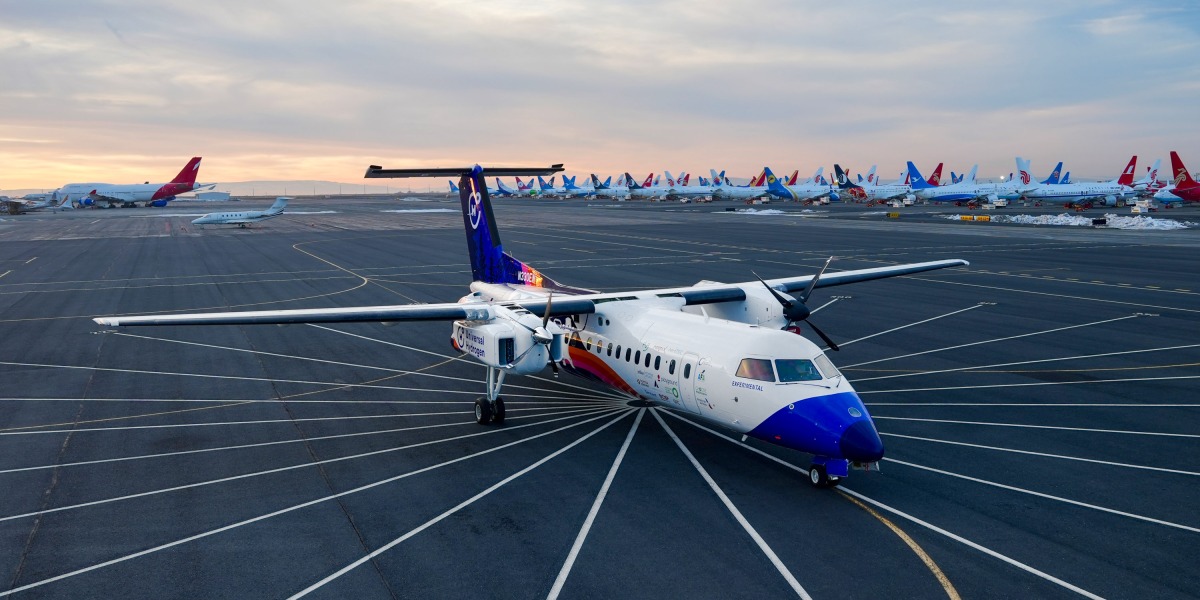
And Universal Hydrogen is joining the race this week. The company has a test flight planned for its Dash 8-300, a regional aircraft with over 40 seats.
The major goal is to test out the propulsion system, which will use hydrogen fuel cells that turn hydrogen and oxygen into water vapor, generating electricity to power the plane.
The aircraft will fly with hydrogen fuel cells powering one side while a traditional jet engine runs on the other. It’s a standard practice for testing out new systems in flight, says Universal Hydrogen CEO and cofounder Paul Eremenko.
Even if the test flight is successful, there’s a long road ahead before cargo or passengers will climb aboard a hydrogen-powered plane. That’s because there’s a lot of infrastructure around airplanes, and a broad switch to hydrogen-powered flight may require rethinking a lot of it.
Take fueling, for example. Commercial airports today have an established network to fuel up planes. Jet fuel is carried in, usually on trucks or in pipelines to a central fueling system. Trucks can then pick it up and bring it to a plane as it sits at a gate.
That whole system might not work so well for hydrogen, Eremenko says. Pipelines carrying hydrogen are prone to leak, and keeping hydrogen in a liquid form requires cooling it down to cryogenic temperatures, which often means there’s a lot of loss when moving it from one container to another.
The solution, as Eremenko sees it, looks a lot like one of my prized possessions: a Nespresso coffee maker. Universal Hydrogen plans to build and use pods filled with hydrogen fuel that can be loaded and unloaded from its airplanes, preventing the need to transfer hydrogen between different containers.
The test flight this week won’t use those pods, since the focus is making sure the plane’s propulsion system works as intended. The Dash 8-300 that will be flying will be powered using hydrogen tanks filled up before flight, but future test flights will use the capsule system to test out how that works in the air, Eremenko says.
